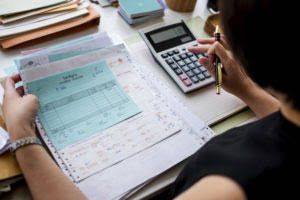
Both US GAAP and IFRS require regular reviews of useful life and residual value estimates, with adjustments made prospectively to reflect new information. The same process will be repeated every year at the end of the financial year. For the past 52 years, Harold Averkamp (CPA, MBA) hasworked as an accounting supervisor, manager, consultant, university instructor, and innovator in teaching accounting online. For the past 52 years, Harold Averkamp (CPA, MBA) has worked as an accounting supervisor, manager, law firm chart of accounts consultant, university instructor, and innovator in teaching accounting online.
- These assets are essential for a company’s day-to-day operations and contribute to its overall productivity and profitability.
- The articles and research support materials available on this site are educational and are not intended to be investment or tax advice.
- Accounting for PP&E, from acquisition to depreciation and impairment, ensures accurate financial reporting and helps stakeholders understand the financial strength and operational capabilities of a company.
- Thus, for plant assets accounting, it is necessary to understand and have a clear idea about the above types of assets.
- With inventory, we saw a direct match between the cost of the product and the sales revenue.
- Let’s take another look at The Home Depot, Inc. balance sheet as of February 2, 2020.
Digitalization of Fixed Assets Management

Although PP&E are vital to the long-term success of many companies, they are also capital intensive. Analysts monitor a company’s investments in PP&E and any sale of its fixed assets to help assess financial difficulties. Depreciation is the periodic allocation of an asset’s value(cost) over its useful life. The basic principle working behind the depreciation of assets is the matching principle.
- Most companies, especially those that run fully in-house and do not rely on other parties for production or processing, require land.
- Later on, the company will charge the depreciation according to the method of depreciation it usually follows.
- To illustrate the accounting procedures when a realized gain on a trade-in occurs, assume that the Jackson Company trades in a delivery truck for a new one.
- Plant assets are deprecated over their useful lives using the straight line or double declining depreciation methods.
- Besides, there is a heavy investment involved to acquire the plant assets for any business entity.
Trade-In of Plant Assets

This approach allows businesses to reflect the decreasing value of the asset accurately on financial statements. Various methods, like the straight-line or declining-balance method, are used to calculate annual depreciation. The exception is land, which typically does not depreciate because it doesn’t wear out or become obsolete over time. The acquisition of plant assets Online Accounting involves careful planning, research, and evaluation to ensure the assets meet the company’s needs and provide value for the investment made. Proper recording and classification of plant assets in accounting documents their cost, useful life, and depreciation, showcasing their value in the financial statements. Depreciation captures the gradual loss of value and wear and tear of plant assets, allowing for accurate financial reporting and asset management.
Definition of Plant Assets

Both models require companies to monitor impairments, ensuring assets are not carried at values exceeding their recoverable amounts. Monte Garments is a factory that manufactures different types of readymade garments. The company also has a printing press for printing customized merchandise with brand designs. A new press technology has just launched in the market, and the company owner decided to acquire the machine. The cost of the machine is USD100,000, and it is expected to stay useful for five years with a residual value of USD10,000. Plant assets are deprecated over their useful lives using the straight line or double declining depreciation methods.
Cash Flow Statement

As a result, a loss of $2,000 ($10,000 book value less $8,000 trade-in allowance) is both realized and recognized. Because the trade-in allowance is only $8,000, a cash payment of $57,000 also must be made by the Jackson Company. For example, assume the same facts in the previous example, but now the dealer offers a trade-in allowance of only $8,000, which is now assumed to be equal to the asset’s fair market value. The APB felt that revenue should plant assets not be recognized merely because one productive asset is exchanged or substituted for a similar one.
- Derecognition occurs when an asset is no longer expected to generate future economic benefits, either through disposal or obsolescence.
- Proper recording and classification of plant assets in accounting documents their cost, useful life, and depreciation, showcasing their value in the financial statements.
- In manufacturing, plant assets like heavy machinery, assembly lines, and warehouses are essential for producing goods efficiently.
- Finance Strategists has an advertising relationship with some of the companies included on this website.
- Vehicles are subject to depreciation due to frequent use and exposure to external elements, and they require regular maintenance to stay operational.

